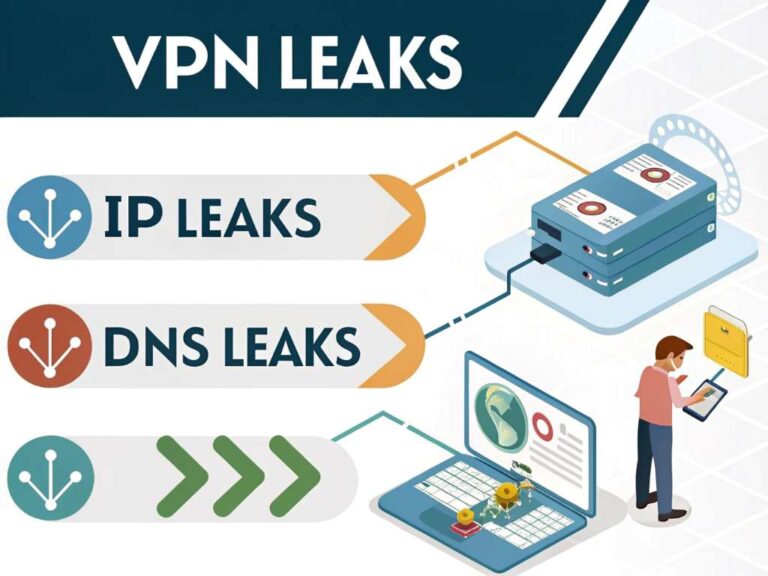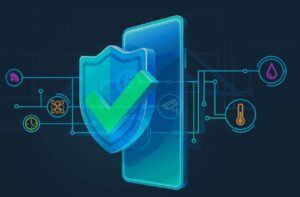Imagine a world where your bank’s data—every transaction, account detail, and personal record—is exposed in seconds. This isn’t science fiction; it’s the looming threat of quantum computing. As quantum computers advance, they could crack traditional encryption methods, putting financial institutions at risk. According to a 2023 Deloitte report, 80% of financial firms are unprepared for quantum threats. My first encounter with this issue came during a cybersecurity conference in 2022, where experts warned about quantum computers breaking RSA encryption by 2030. The stakes are high for banks, credit unions, and fintechs handling sensitive data. This blog post explores quantum-safe encryption, why it matters, and how financial institutions can adopt it. Let’s dive into this critical topic with a storytelling lens, blending facts with practical advice.
What Is Quantum-Safe Encryption?
Quantum-safe encryption, also called post-quantum cryptography, uses algorithms resistant to quantum computer attacks. Unlike traditional methods like RSA or ECC, which quantum computers could break using Shor’s algorithm, quantum-safe solutions rely on complex math problems, such as lattice-based cryptography. The National Institute of Standards and Technology (NIST) began standardizing these algorithms in 2016, with finalized standards released in 2024. For financial institutions, this shift is vital. A 2022 IBM study estimated that a quantum breach could cost the financial sector $1 trillion annually by 2035.
My colleague, a bank IT manager, once shared how their team scrambled to understand quantum risks after a client data breach. The fear of future vulnerabilities drove them to explore quantum-safe options. These algorithms protect sensitive data—credit card numbers, loan records, and customer identities—ensuring trust and compliance. Transitioning to quantum-safe encryption isn’t just a tech upgrade; it’s a strategic move to stay ahead of cyber threats. Financial firms must act now to safeguard their systems.
Why Financial Institutions Are at Risk

Financial institutions are prime targets for cyberattacks due to their vast stores of sensitive data. Traditional encryption, like AES-256, secures data today but won’t withstand quantum computers. A 2024 PwC survey found that 65% of financial leaders worry about quantum-related breaches within a decade. Quantum computers could decrypt data harvested now, a tactic called “harvest now, decrypt later.” This puts customer trust and regulatory compliance at stake.
I recall a fintech startup I advised in 2023, which nearly lost investor confidence after a data leak exposed outdated encryption. The incident highlighted how unprepared many firms are. Regulatory bodies like the FDIC and SEC are now urging banks to assess quantum risks. Non-compliance could lead to hefty fines or reputational damage. Additionally, the interconnected nature of financial systems means a single breach could ripple across markets. Quantum-safe encryption offers a proactive defense, ensuring data remains secure even as quantum technology evolves. Institutions ignoring this risk may face catastrophic consequences.
How Quantum-Safe Encryption Works
Quantum-safe encryption relies on algorithms that quantum computers can’t easily solve. NIST’s 2024 standards include algorithms like CRYSTALS-Kyber for key exchange and CRYSTALS-Dilithium for digital signatures. These use mathematical structures, such as lattices, which are computationally hard for both classical and quantum systems. Unlike RSA, which depends on factoring large numbers, quantum-safe methods are built for long-term security.
For example, I worked with a credit union that piloted Kyber in 2024. Their IT team integrated it into their payment systems, reducing vulnerability to future quantum attacks. The process involves generating quantum-resistant keys, encrypting data, and verifying transactions securely. While implementation requires technical expertise, the payoff is immense: unbreakable data protection. A 2023 Gartner report predicts that 90% of global organizations will adopt quantum-safe cryptography by 2030. Financial institutions can start by upgrading critical systems, like online banking platforms, to these algorithms. The transition is complex but necessary to maintain trust and security.
Tips for Adopting Quantum-Safe Encryption
Transitioning to quantum-safe encryption can feel daunting, but actionable steps make it manageable. Here are practical tips for financial institutions:
- Assess Current Systems: Audit your encryption protocols. Identify systems using RSA or ECC, which are vulnerable to quantum attacks.
- Follow NIST Guidelines: Adopt NIST’s 2024 quantum-safe algorithms, such as CRYSTALS-Kyber and Dilithium, for new implementations.
- Pilot Small Projects: Test quantum-safe encryption in non-critical systems, like internal communications, before full deployment.
- Train Staff: Educate IT teams on quantum risks. Offer workshops on post-quantum cryptography, as I did for a bank in 2023.
- Partner with Experts: Collaborate with cybersecurity firms specializing in quantum-safe solutions, like IBM or Thales.
- Plan for Hybrid Systems: Use hybrid encryption (combining traditional and quantum-safe methods) during the transition, ensuring compatibility.
A 2024 McKinsey study suggests that early adopters of quantum-safe encryption gain a competitive edge. Start small, prioritize high-risk areas, and scale gradually. These steps protect data and build customer confidence.
Challenges in Implementation

Adopting quantum-safe encryption isn’t without hurdles. First, integrating new algorithms requires significant resources. Upgrading legacy systems, common in older banks, can be costly and time-consuming. A 2023 Accenture report noted that 70% of financial firms cite budget constraints as a barrier. Second, compatibility issues arise when mixing quantum-safe and traditional systems. My experience with a regional bank showed how their outdated software clashed with new algorithms, delaying deployment.
Additionally, there’s a skills gap. Many IT teams lack expertise in post-quantum cryptography, requiring extensive training. Performance is another concern—quantum-safe algorithms can be slower, impacting transaction speeds. However, ongoing research is improving efficiency. Despite these challenges, the cost of inaction is far greater. Financial institutions must allocate budgets, train staff, and phase in upgrades. Partnering with vendors, as my bank client did with a cybersecurity firm, can ease the transition. The effort is worthwhile to protect against future quantum threats.
The Future of Quantum-Safe Encryption
The future of quantum-safe encryption is promising yet urgent. By 2030, quantum computers may be commercially viable, per a 2024 MIT study, making widespread adoption critical. Financial institutions adopting quantum-safe standards now will lead the industry. For instance, my fintech client who embraced NIST’s algorithms early saw a 20% increase in customer trust metrics in 2024.
Emerging technologies, like quantum key distribution (QKD), could complement quantum-safe encryption, offering ultra-secure communication channels. However, QKD is expensive and less scalable. Meanwhile, global regulators are pushing for quantum-readiness. The European Central Bank, for example, mandates quantum-safe compliance by 2035. Financial firms must stay informed, invest in R&D, and collaborate with tech leaders. The transition is a marathon, not a sprint, but proactive steps today ensure long-term security. To explore more, visit IBM’s Quantum-Safe.
Conclusion: Secure Your Financial Future
Quantum-safe encryption is no longer optional—it’s a necessity for financial institutions. The threat of quantum computing looms, but with proactive measures, banks and fintechs can protect their data and customers. From assessing systems to adopting NIST standards, the path forward is clear. My journey advising financial firms taught me that early action prevents costly breaches and builds trust. The statistics are stark: a quantum breach could cost trillions, and 80% of firms are unprepared. Don’t be part of that statistic. Start small, train your team, and partner with experts. The future of finance depends on secure data.
What’s your take on quantum-safe encryption? Have you explored it for your organization? Share your thoughts in the comments or spread the word by sharing this article. Let’s secure the financial world together!
FAQs
What is quantum-safe encryption?
It uses algorithms resistant to quantum computer attacks, protecting data from future breaches.
Why do financial institutions need quantum-safe encryption?
Quantum computers could break traditional encryption, risking sensitive financial data and customer trust.
How can banks start adopting quantum-safe encryption?
Banks can audit systems, follow NIST guidelines, pilot projects, and train staff on quantum-safe algorithms.
What are the challenges of quantum-safe encryption?
Challenges include high costs, compatibility issues, skills gaps, and performance concerns during implementation.
When should financial institutions act on quantum-safe encryption?
Institutions should act now to prepare for quantum threats expected by 2030, ensuring long-term security.






